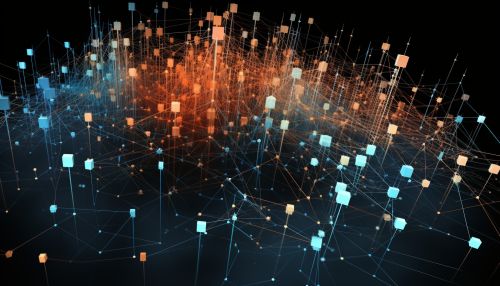Cluster Analysis
Introduction
Cluster analysis or clustering is the task of grouping a set of objects in such a way that objects in the same group (called a cluster) are more similar (in some sense) to each other than to those in other groups (clusters). It is a main task of exploratory data analysis, and a common technique for statistical data analysis, used in many fields, including machine learning, pattern recognition, image analysis, information retrieval, bioinformatics, data compression, and computer graphics.


Definition
Cluster analysis itself is not one specific algorithm, but the general task to be solved. It can be achieved by various algorithms that differ significantly in their understanding of what constitutes a cluster and how to efficiently find them. Popular notions of clusters include groups with small distances among the cluster members, dense areas of the data space, intervals or particular statistical distributions.
Types of Clustering
Clustering can be divided into two subgroups:
1. Hard Clustering: In hard clustering, each data point either belongs to a cluster completely or not. For example, in the below diagram, each data point is part of exactly one circle. 2. Soft Clustering: In soft clustering, instead of putting each data point into a separate cluster, a probability or likelihood of that data point to be in those clusters is assigned. For example, from the below diagram, it can be seen that data points at the borders of a circle can be noted as belonging to both circles.
Clustering Algorithms
There are various algorithms that can be applied for data clustering. Some of the popular ones include:
1. Connectivity models: As the name suggests, these models are based on the notion that the data points closer in data space exhibit more similarity to each other than the data points lying farther away. These models can be visualized as trees, which lends a hierarchy to the clusters. The drawback of these models is that they are not very robust towards outliers, which might lead to errors in the final clusters. Example: Hierarchical clustering 2. Centroid models: These are iterative clustering algorithms in which the notion of similarity is derived by the closeness of a data point to the centroid of the clusters. K-Means clustering algorithm is a popular algorithm that falls into this category. In these models, the number of clusters required at the end have to be mentioned beforehand, which makes it important to have prior knowledge of the dataset. These models run iteratively to find the local optima. 3. Distribution models: These clustering models are based on the notion of how probable is it that all data points in the cluster belong to the same distribution (For example: Normal, Gaussian). These models often suffer from overfitting. A popular example of these models is Expectation-Maximization algorithm which uses multivariate normal distributions. 4. Density Models: These models search the data space for areas of varied density of data points in the data space. It isolates various different density regions and assign the data points within these regions in the same cluster. Popular examples of density models are DBSCAN and OPTICS.
Applications of Cluster Analysis
Cluster analysis has a plethora of applications spread across various industries and fields. Some of them are:
1. Marketing: Finding groups of customers with similar behavior given a large database of customer data containing their properties and past buying records. 2. Biology: Classification of plants and animals given their features. 3. Libraries: Book ordering. 4. Insurance: Identifying groups of motor insurance policy holders with a high average claim cost. 5. City-planning: Identifying groups of houses according to their house type, value, and geographical location. 6. Earthquake studies: Clustering observed earthquake epicenters to identify dangerous zones. 7. WWW: Document classification. 8. Image segmentation: Clustering pixels in an image for segmentation.
Limitations and Challenges
Despite its wide range of applications and uses, cluster analysis is not without its limitations and challenges. Some of these include:
1. The Curse of Dimensionality: This refers to the difficulty of visualizing and processing data in high-dimensional spaces. It can also lead to overfitting. 2. Scalability: Many clustering algorithms work well on small datasets but can be inefficient on larger datasets. 3. Initial Conditions: Some algorithms, such as K-means, are sensitive to the initial choice of centroids, which can lead to different clustering results. 4. Number of Clusters: In many applications, the number of clusters is not known a priori, making it difficult to determine the appropriate number of clusters. 5. Noise and Outliers: Some algorithms are sensitive to noise and outliers in the data.
See Also
Data Mining, Machine Learning, Pattern Recognition, Image Analysis, Information Retrieval, Bioinformatics, Data Compression, Computer Graphics
Categories
,,
